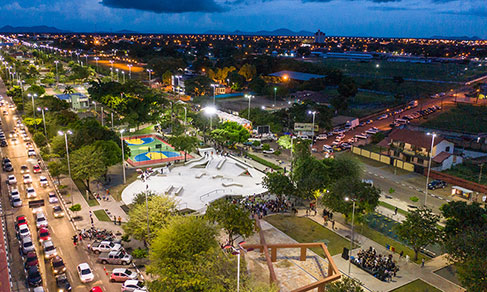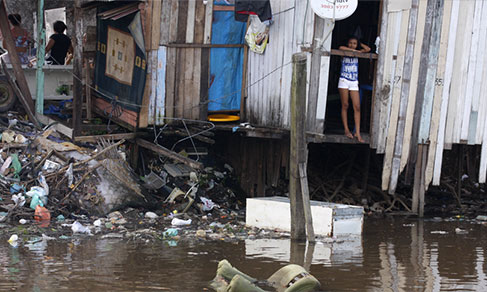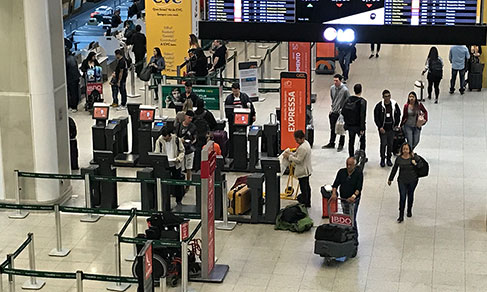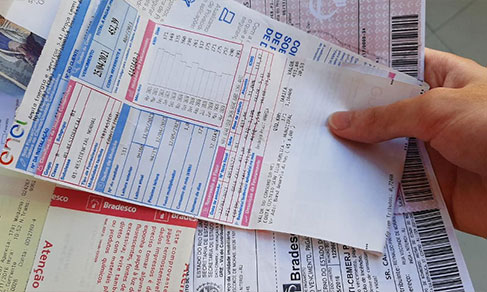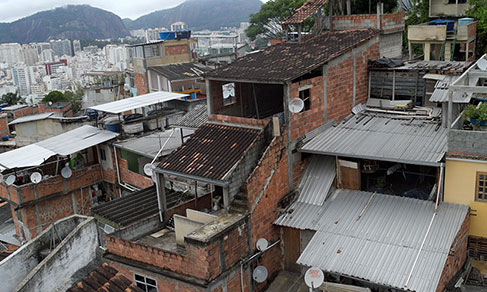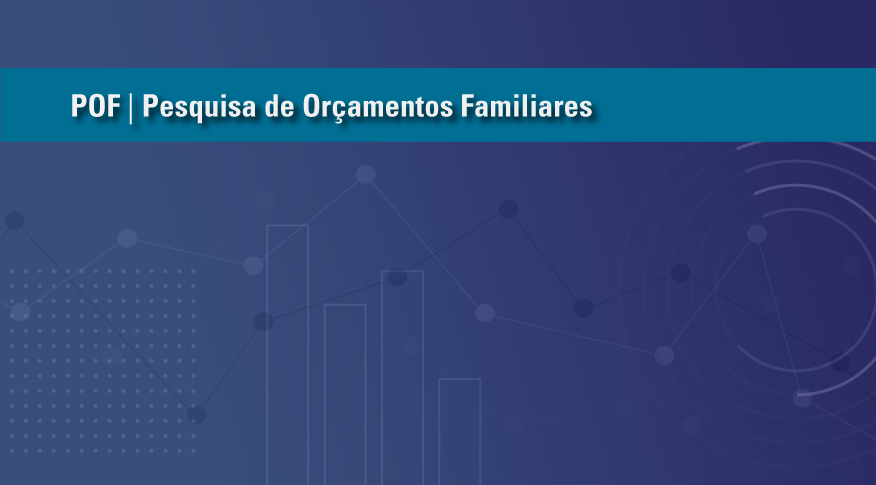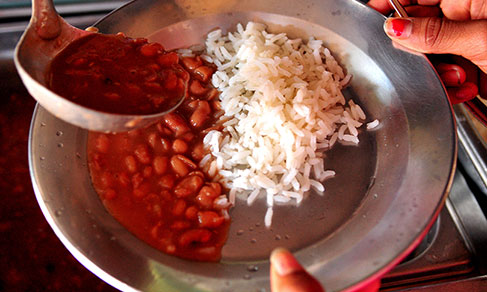Nossos serviços estão apresentando instabilidade no momento. Algumas informações podem não estar disponíveis.
POF - Consumer Expenditure Survey
About - Profile of spending in Brazil: selected indicators
The Consumer Expenditure Surveys (POF) conducted by the IBGE aim at the dissemination of information about the composition of domestic budgets and living conditions of the Brazilian population, including the subjective perception of quality of living, besides the generation of databases and studies about people's nutritional profiles.
With the release of this publication, the IBGE Com o lançamento desta publicação, o IBGE continues the dissemination of POF 2017-2018 results, now covering the profile of expenses, either monetary or non-monetary (consumption expenditure and other current expenses), as well as the increase of assets and the decrease of liabilities of residents.
The results, encompassing families that live in urban and rural areas, for the Country and Major Regions, are presented in a completely different approach from POF 2008-2009 about the same topic. Besides information about per capita spending and its components, other five dimensions are covered – income, housing, access to public utility services, health and education –, according to some determining elements of quality of living in Brazil, such as the household geographic location, family arrangements, and the characteristics of the reference person, such as sex, color or race, age and level of schooling.
The analysis of results, illustrated by tables and graphs, also refers to inequality and poverty, investigated from the perspective of per capita household disposable income: in the former case, by using the Gini index and the General Enthropy index; in the latter, by using measures calculated according to internationally adopted lines, monitoring of Sustainable Development Objects - SDO. A complement to such approaches comes from the insertion of the household reference person in the labor market, including position and level of formality, and information on health and education, including details on non-monetary parcels of services.
The technical notes that follow the publication summarize the procedures adopted in the collection and treatment of survey data, the concepts of variables investigated, among other considerations of methodological nature.
The IBGE web portal makes available data collection instruments used in POF 2017-2018, as well as survey microdata, in such a way as to facilitate the exploration of its databse from different perspectives.
Tables - Profile of spending in Brazil: selected indicators
Publications - Profile of spending in Brazil: selected indicators
Description
The Consumer Expenditure Survey - POF assesses the structures of consumption, expenditures, income and part of the asset variation of the households, providing a profile of the life conditions of the population based on the analysis of the household budgets. In addition to the information directly associated with the budget structure, a number of characteristics of the housing units and households are also investigated, including the subjective self-assessment of life quality. The results of the survey also allow to study the composition of the household expenditures according to the income classes, regional disparities, urban and rural status, diffusion and volume of transfers between different income classes, as well as the dimension of the consumer market for groups of products and services. The survey has the household as the investigation unit and it is based on sampling.
The 2008-2009 POF was the fifth survey carried out by the IBGE on household budget. The previous editions were: the 1974-1975 National Study of Household Expenditure - ENDEF, with a nationwide coverage, except for the rural areas of the North and Central-West Regions; the 1987-1988 POF; the 1995-1996 POF; and the 2002-2003 POF. The Consumer Expenditure Surveys of the 1980s and 1990s were conceived to primarily update the consumer structures of the consumer price indexes produced by the IBGE, being accomplished in the Metropolitan Areas of Belém, Fortaleza, Recife, Salvador, Belo Horizonte, Rio de Janeiro, São Paulo, Curitiba and Porto Alegre, in the Municipality of Goiânia, and in the Federal District. Besides covering the entire Brazilian territory, the POFs of the 2000s included additional subjects over the previous editions, due to the need of detailed information on the life conditions based on the consumption, particularly of the households with lower income, the reason why the rural area was included in the geographic coverage and the non-monetary purchases were also investigated.
The current sample design of POF was structured in such a way that it releases the results at the following levels: Brazil, Major Regions and also by urban or rural status. The results include the totals and the urban situation for the Federation Units. The results correspond to the urban situation in the nine Metropolitan Areas and Municipalities of the Capitals. As of the project called Master Sample, developed by the IBGE to implement the Integrated System of Household Surveys - SIPD, the Consumer Expenditure Surveys had the sample design defined by the Master Sample, and its sectors selected among those from that sample.
Microdata
2017-2018
Updated on 3/4/2021
- Data
- Documentation - updated on 04/23/2021
- Questionnaires - updated on 04/23/2021
- Table Translators
- Reading Software
- Calculation Memory
- Readme
2008-2009
- Data - updated on 10/05/2021
- Documentation - updated on 10/05/2021
- Questionnaries
- Table Translators
- Manual of the Survey Agent
- Readme
2002-2003
Technical Information
Methodological considerations on the Consumer Expenditure Survey can be obtained in the Technical notes chapter of its results publication.
News and Releases
POF 2017-2018
Three new indexes show drop of poverty and vulnerability between 2008-2009 and 2017-2018
For the first time ever, the IBGE releases, as experimental statistics, the Evolution of Non-Monetary...
25/08/2023
POF 2017-2018
POF: Socioeconomic performance index for Brazil grows 12.8% between 2008 and 2018
The IBGE released today (23) an updating of the indicators that measure the quality of life of the Brazilian...
23/06/2023
POF 2017-2018
2017-2018 POF: Loss of quality of life is almost twice as much in rural areas
The IBGE presents for the first time a multidimensional index for the loss of quality of life (IPQV),...
26/11/2021
POF 2017-2018
Loss of quality of life is almost twice as much in rural areas
The loss of quality of life of people living in the rural areas of the country is almost twice as big...
26/11/2021
POF 2017-2018
POF 2017-2018: 72.4% of Brazilians lived in households that had trouble paying for monthly expenses
Approximately 72.4% of Brazilians lived in housing units having trouble paying for monthly expenses,...
19/08/2021
POF 2017-2018
Households headed by white persons spend almost twice on travel and leisure than those headed by blacks or browns
Households headed by white persons spent almost twice on travel and leisure, between 2017 and 2018, than...
19/08/2021
POF 2017-2018
72.4% of Brazilians live in households that have trouble paying their bills
Approximately 72.4% of the Brazilian population lived were members of households that had trouble paying...
19/08/2021
POF 2017-2018
30% of the population with the lowest earnings live on less than the necessary amount to make ends meet
About 30% of the persons with the lowest earnings in the country, between 2017 and 2018, lived on less...
25/11/2020
POF 2017-2018
2017-2018 POF: proportion of food secure households stands below 2004 level
In 2017-2018, of the 68.9 million households in Brazil, 36.7% (equivalent to 25.3 million) had some degree...
17/09/2020
POF 2017-2018
10.3 million persons live in households with severe food insecurity
Severe food insecurity was present in the home of 10.3 million Brazilians at least for some time between...
17/09/2020
Errata
Amendment of the average intake of fibers for women aged 60 years and over, in table 15 of POF 2017-2018 – Analysis of personal food intake in Brazil
Published date: 15/01/2021
Description:
Identification of an error in the generation of Table 15, only for the cell on the average intake of fibers for women aged 60 years and over.Actions: The result was reviewed and updated in the publication table.
Calendar error in the release of the Consumer Expenditure Survey - POF 2017-2018 - Household Food Acquisition per Capita
Published date: 12/07/2019
Description:
An error, identified by the IBGE, for the non-compliance with the release data established in December 2018. Due to rescheduling, the new release date for the results of the Consumer Expenditure Survey - POF 2017-2018 - Household Food Acquisition per Capita for the 1st semester of 2020.
Actions: The release calendar was corrected.
Descrição:
Erro, identificado pelo IBGE, pelo não cumprimento da data de divulgação da pesquisa, conforme calendário disponibilizado em dezembro de 2018. Em virtude da necessidade de readequação de prazos, a data de divulgação dos resultados da Pesquisa de Orçamentos Familiares POF 2017-2018 -Aquisição Alimentar Domiciliar per Capita foi reagendada para o primeiro semestre de 2020.
Ações: O calendário de divulgação foi alterado.Calendar error in the release of the Consumer Expenditure Survey (POF) 2017-2018 - First Results
Published date: 10/06/2019
Description:
An error, detected by the IBGE, relative to non-compliance to the release date informed in the calendar made available in December 2018. Due to the need of rescheduling, the new release date of the Consumer Expenditure Survey (POF) 2017-2018 - First results is October 04, 2019.
Actions: The release calendar was changed.
Calendar Error in the Consumer Expenditure Survey 2017-2018 - Household Food Acquisition per Capita
Published date: 10/06/2019
Description:
An error, detected by the IBGE, relative to non-compliance to the release date informed in the calendar made available in December 2018. Due to the need of rescheduling, the new release date of results of the Consumer Expenditure Survey 2017-2018 - Household Food Acquisition per Capita is December 18, 2019.Actions: The release calendar was changed.
Nutritional composition of food
Tables of Nutritional Composition of Food Intake in Brazil
To see comparative graphs and information tables, select at least one item in the "Food" menu and one in the "Preparation Method(s)" menu and click on "Insert food".





